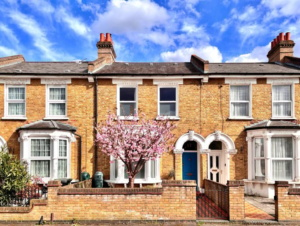What does the price cap increase mean for energy bills?
The energy price cap is the maximum amount energy suppliers can charge you for each unit of energy you use. It’s updated every three months by energy regulator Ofgem, to make sure that prices reflect changes in underlying energy costs, as well as inflation.
For the period 1 April to 30 June 2025, the price cap has risen by 6.4%, to £1,849. This is £111 higher than the previous price cap, which was in place until 31 March.
But this is the average a ‘typical’ household will pay. Ofgem estimates a typical or ‘medium-use household’ as those living in a 2-3 bedroom house with 2 or 3 people. The amount you pay will depend on how much energy you use, as well as how you pay your energy bills, the size of your home, and how energy efficient it is.
Our Chief Data Officer, Steve Pimblett, says: “Those living in draughty, poorly insulated homes will be hardest hit by energy bills rising again. When we look at different EPC bands, our analysis shows people living in the lowest rated homes typically pay almost ten times more each year on their energy bills, compared with those living in the highest rated homes.
“There are at least 18 million homes that currently have lower ratings of EPC bands D to G, showing the scale of work needed to help lower energy bills for these households. More incentives or schemes to help people make green changes to their homes could help to improve older homes in the UK, and make energy bills more affordable.”
You can read more about the average UK energy bill, depending on the type of property you live in, here. Or take a look at what a 6.4% increase could add to the average annual energy bill below.
How much extra will a 6.4% rise add to the average annual energy bill?
| Property type | EPC rating A | EPC rating B | EPC rating C | EPC rating D | EPC rating E | EPC rating F | EPC rating G |
|---|---|---|---|---|---|---|---|
| 1-bed flat | +£34 | +£51 | +£76 | +£108 | +£147 | +£175 | +£227 |
| 2-bed flat | +£32 | +£59 | +£87 | +£128 | +£175 | +£223 | +£280 |
| 3-bed terraced house | +£30 | +£64 | +£107 | +£150 | +£207 | +£265 | +£333 |
| 3-bed semi-detached house | +£31 | +£63 | +£109 | +£150 | +£207 | +£272 | +£342 |
| 3-bed detached house | +£27 | +£69 | +£117 | +£164 | +£224 | +£288 | +£403 |
| 4-bed semi-detached house | +£39 | +£77 | +£138 | +£195 | +£273 | +£340 | +£468 |
| 4-bed detached house | +£38 | +£83 | +£148 | +£203 | +£279 | +£359 | +£526 |
| 5-bed detached house | +£47 | +£112 | +£192 | +£269 | +£359 | +£463 | +£763 |
Does the energy price cap affect me?
If you’re on a fixed tariff for your energy supply, there’ll be no change to how much you pay. Fixing your energy deal can be a good way to beat any increases applied to the price cap, because for the period of your deal, your energy costs won’t change, regardless of what happens with the price cap. You can also look at switching to a different energy supplier if there are cheaper deals available elsewhere.
The energy price cap is only applied if you’re on a default energy, or standard variable, tariff. This includes those who pay by direct debit, standard credit, prepayment meter, or who have an Economy 7 (E7) meter.
From 1 October 2023, changes were made to how the discount is paid for homes that have pre-payment meters installed. Instead of being delivered as a discount to unit rates, a discount will be applied to the standing charge.
If you pay by direct debit, your energy bills are usually based on an estimate of how much you use. So if you’re in credit, it’s worth doing a meter reading and getting in touch with your supplier to check you’re still paying the right amount.
Energy price cap by payment type: April to June 2025
| Direct Debit | Prepayment | Standard Credit | Economy 7* | |
|---|---|---|---|---|
| Jan – Mar 2025 cap | £1,738 | £1,690 | £1,851 | £1,150 |
| Apr – Jun 2025 cap | £1,849 | £1,803 | £1,969 | £1,201 |
| £ change | +£111 | +£113 | +£118 | +£51 |
Source: Ofgem. *Electricity-only tariff.
READ MORE: Find out how the Energy Price Cap is set
What does a 6.4% higher energy bill look like?
Our analysis shows that homes with higher energy ratings have lower energy bills, on average. Based on the upcoming price cap increase, this is likely to mean an extra £35 on average for A-rated homes annually, rising to an extra £418 for G-rated homes. D-rated homes, which is the current average EPC rating, are likely to see a £171 increase on average.
Our energy bill tracker analyses the EPCs of homes recently listed for sale, and what an annual energy bill could look like based on property type, and EPC rating.
How will the price cap change impact my energy bills?
You can check the average rate charged per unit of energy used below, and compare that with your household energy bills to work out an estimate of your household’s energy usage.
Energy price cap: What’s the average rate charged per unit of energy used?
| Jan-Mar 2025 | Apr-Jun 2025 | |
|---|---|---|
| Gas | 6.34p per kWh | 6.99p per kWh |
| Electricity | 24.86p per kWh | 27.03p per kWh |
Source: Ofgem. Based on average rates for direct debit users, which vary by region
Ofgem estimates a typical or ‘medium-use household’ as a two- to three-bedroom house with 2 or 3 people living in it.
If you live in a flat, or a one-bedroom house, your energy use is estimated to be ‘low’. And if you live in a four-bedroom home, with 4-5 people, your energy use is estimated to be ‘high’. See below.
| Energy use | Example – size of home & number of residents | Typical annual gas use | Typical annual electricity use |
|---|---|---|---|
| Low | Flat or 1-bed house; 1-2 people | 8,000 kWh | 1,800 kWh |
| Medium | 2-3 bed house; 2-3 people | 12,000 kWh | 2,900 kWh |
| High | 4+ bed home, 4-5 people | 17,000 kWh | 4,300 kWh |
| Source: Ofgem |
Source: Ofgem
The current rates and standing charges in your region are outlined here.
How much you’ll pay also depends on how energy-efficient your home is, and which appliances you use – and how often you use them.
Energy usage is calculated in kilowatt (kWh) hours, or units. One kWh is enough to power a 100-watt lightbulb for 10 hours, but in comparison, it takes 4.5 kWhs to power a single cycle of a tumble dryer.
Will there be a change to the standing charge on my bill?
The fixed standing charge you pay is just to have a connection, regardless of how much energy you use. It’s also used to cover things like maintenance of the supply network, take meter readings, and to support government and environmental schemes.
Under the January to March 2025 price cap, standing charges were 60.97p per day for electricity, and 31.65p per day for gas. From April to June 2025, they are 53.80p for electricity, and 32.67p per day for gas.
Ofgem launched a review into standing charges in 2023, and you can read their report into the findings here. The most significant recommendation from Ofgem was that energy companies may in future have to offer customers a zero standing charge tariff.
Is there anything I can do to save money on my bill?
When energy bills were at their peak in 2022, switching to a different supplier was no longer an option for saving money on your energy bills. But now, switching to a new supplier, or checking whether your existing supplier has a better deal, might just save you money.
You can use our calculator to check whether you could reduce your bills by switching.
Will energy costs keep rising?
The energy price cap covers a period of three months and changes four times a year: in January, April, July and October.
Analysts at Cornwall Insight – an independent energy research, analytics and consulting firm – forecast energy costs could fall slightly for the July – September 2025 price cap.
READ MORE: What’s the average UK energy bill and how can I save money?



